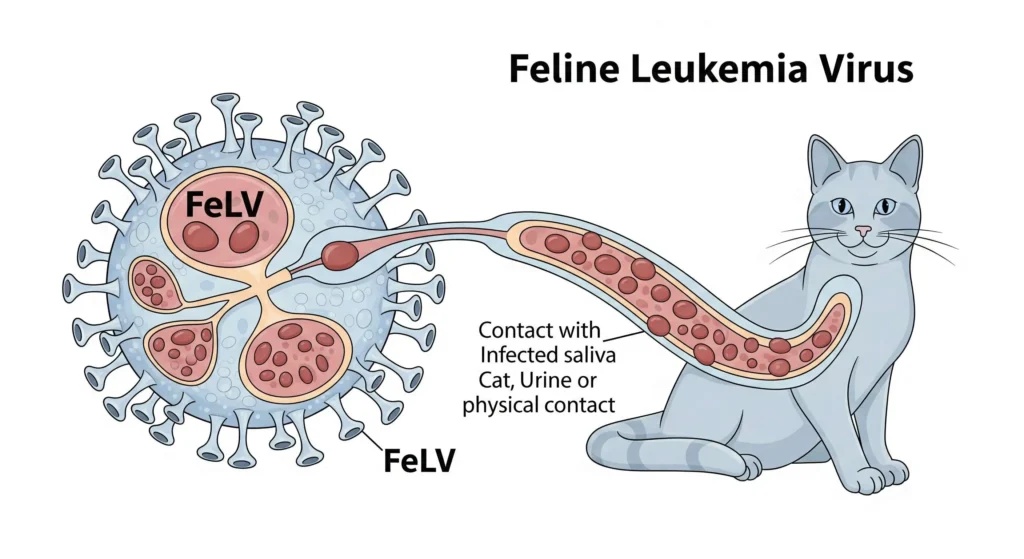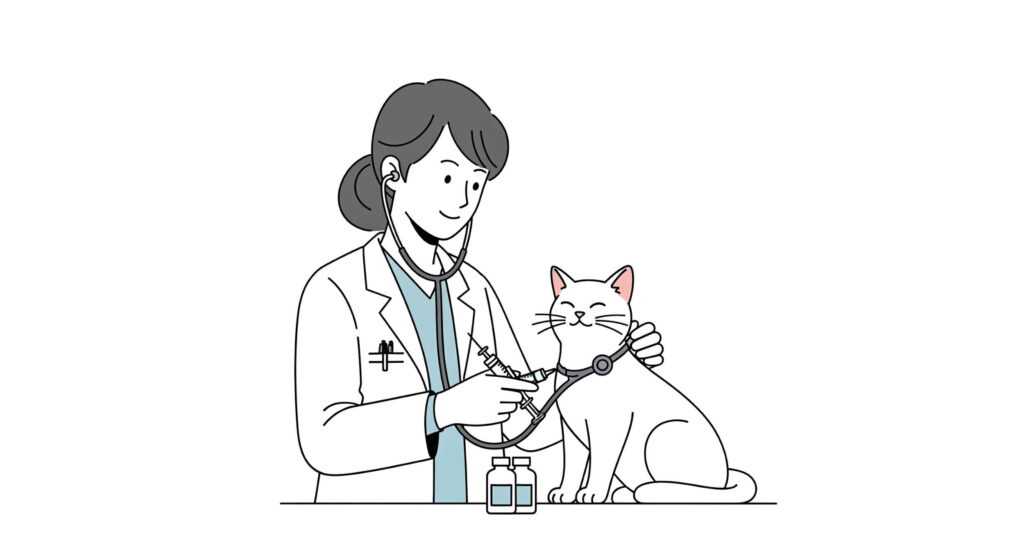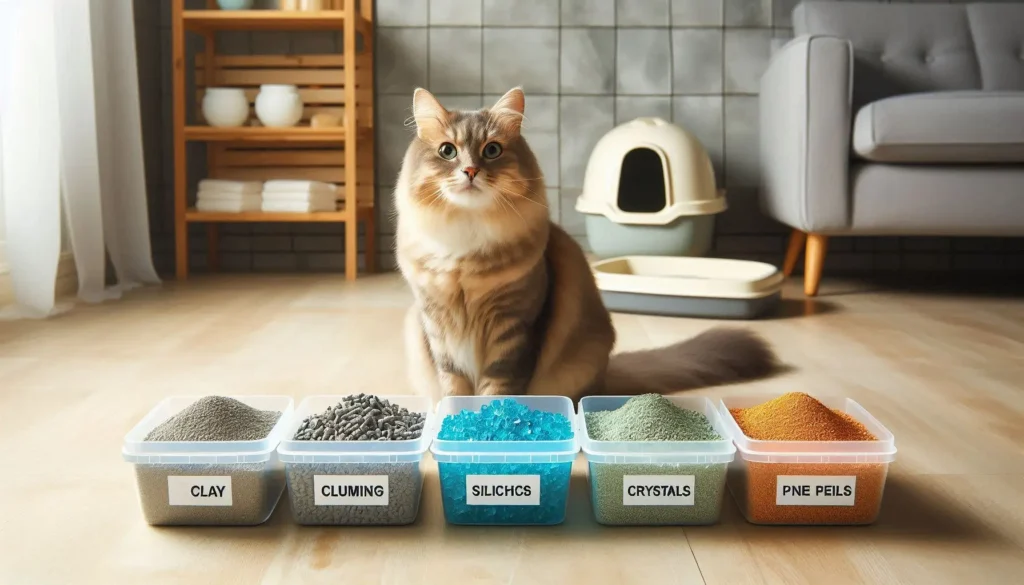Common Diseases in Cats & How To Prevent Them
Cats, despite their independent nature, are vulnerable to a variety of health conditions that can significantly affect their well-being. Understanding the common cat diseases and how to prevent them is essential for both pet owners and veterinary professionals.
Proper care, regular vet check-ins, and preventive measures can prevent or protect the cat from respiratory infections or chronic kidney disease.
Below are the five most common cat diseases explained by vet tech professionals and some tips on how to prevent them.
1. Upper Respiratory Infections (URIs)

URIs are among the most common diseases of cats, especially in environments like shelters or multi-cat households. These infections are usually viral and highly contagious.
Causes:
- Feline Herpesvirus: A highly contagious virus that affects the respiratory tract, eyes, and nose. It is known for causing persistent infections, particularly in periods of stress.
- Feline Calicivirus: A major virus that causes respiratory diseases in cats, leading to frequent mouth ulcers, sneezing, and a persistent nasal discharge, which can quickly spread in multi-cat environments.
Symptoms:
- Sneezing
- Coughing
- Nasal discharge
- Watery eyes
- Mild fever or loss of appetite in more serious cases
Prevention:
Routine vaccination with the FVRCP vaccine is essential. Quarantine for new or sick cats and cleanliness must also be observed. Regular visits can help in the detection of asymptomatic carriers. Normally, vet teams help in picking up subtle signs during wellness exams and can also educate cat parents on the practices of containment.
2. Chronic Kidney Disease (CKD)

One of the most common chronic conditions affecting senior cats, chronic kidney disease typically occurs in felines over the age of seven. The question “How common is kidney disease in cats?” has a troubling answer—CKD is one of the leading causes of death in older cats.
Symptoms:
- Increased thirst and urination
- Vomiting
- Weight loss
- Poor coat condition
- Lethargy in advanced cases
Prevention:
While CKD can’t usually be prevented, early detection through routine blood work (especially after age seven) is essential. Special kidney-supportive diets can slow the progression of the disease. A veterinarian will guide pet owners through treatment plans, dietary management, and long-term care.
3. Feline Lower Urinary Tract Disease (FLUTD)
This group of disorders affects the bladder and, in some cases, the urethra. FLUTD is another common disease of cats, often linked to lifestyle factors.
Causes:
- Obesity
- Dehydration
- Stress
- Poor diet
Symptoms:
- Painful or difficult urination
- Blood in urine
- Frequent visits to the litter box
- Vocalization during urination
Prevention:
Use wet food or fountains to make them drink more, and also reduce stress by making their environment better. Check how much they weigh and test their urine regularly to find out about urinary problems early on.
4. Diabetes Mellitus
This disease is becoming increasingly seen, especially in overweight and older cats. Diabetes happens when the body can’t make or use insulin the right way.
Symptoms:
- Increased thirst (polydipsia)
- Frequent urination (polyuria)
- Weight loss despite increased appetite
- Weakness or lethargy
Prevention:
Keeping an ideal body weight through portion control and active play is a good preventive measure. Vets recommend regular wellness exam checks for at-risk cats. Vets play a key role in monitoring blood sugar and teaching owners how to give insulin when needed.
5. Feline Leukemia Virus (FeLV)

A virus disease through which the immune system of the cat will be weak. This is contagious in affected cats or from contact with saliva, urine, or physical contact with infected animals.
Symptoms:
- Fever
- Weight loss
- White colored
- Swollen gums
- Recurrent infection
Prevention:
Vaccination should be provided to cats that are at risk for exposure; these include outdoor cats and multi-cat households. Serologic testing for FeLV should be included in the routine initial examination of any new feline patient, especially in shelters or before introducing a new cat to a home.
How Vets Help Manage and Prevent Common Cat Diseases

Veterinarians are essential in detecting, treating, and preventing common cat diseases. From diagnosing conditions early through exams and lab tests to providing client education and long-term management plans, vets are a crucial resource for every cat owner.
Attending veterinary conferences and staying current with the latest research helps veterinarians and vet techs stay on top of emerging trends in feline healthcare. This knowledge translates into better care strategies and improved outcomes for cats with chronic or preventable diseases.
Pet owners should always seek veterinary guidance when they notice symptoms or want to know more about managing conditions like:
- Kidney disease
- Diabetes
- Feline leukemia
- Urinary tract disorders
In chronic cases, the vet team will provide medication, dietary changes, and ongoing monitoring to help cats live longer, healthier lives.
In The End
Veterinarians possess the knowledge and skills essential for quickly and efficiently preventing diseases in cats.
By applying the latest research and best evidence-based practices, veterinary professionals can significantly improve and extend a cat’s quality of life.
Another critical point is that pet owners play a vital role in maintaining their cats’ health by staying informed, taking them to regular vet visits, and responding quickly to any changes in their pet’s normal behavior.
When pet owners stay proactive and informed, they actively partner with veterinarians, who lead the efforts to help cats live healthier, longer lives.
About This Article
This article, “Common Diseases in Cats & How To Prevent Them”, was written by Sara Williams.
Sara Williams is an experienced content marketer specializing in animal health and veterinary topics. She crafts insightful, well-researched content designed to educate pet owners and support veterinary professionals.
As Sara puts it, sharing knowledge is the first step toward better care and happier pets everywhere.

Frequently Asked Questions
Like HIV/AIDS in humans, the feline leukemia virus (FeLV) and feline immunodeficiency virus (FIV) are retroviruses. Outdoor cats are more at risk. Although infected cats typically do not exhibit signs for years, they will ultimately acquire viral infections or cancer.



